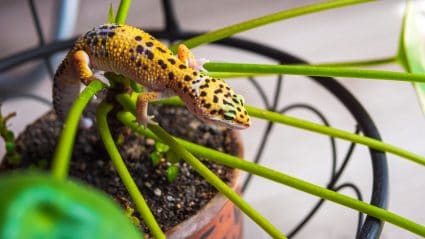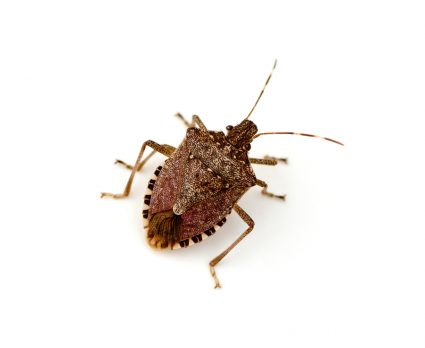
Gardening can be a rewarding experience until you find your precious plants being invaded by bugs. But fear not, there are numerous ways to repel bugs from your plants. This comprehensive guide will provide detailed information on the types of bugs that infest plants, the signs of infestation, natural methods to keep bugs away, and how maintaining the health of your plants can help in repelling bugs.
To repel bugs from plants, you can use homemade insecticides made from household items like dish soap, vegetable oil, vinegar, and garlic. Another method is companion planting, which involves planting certain plants together to deter pests. Some plants, like basil and chrysanthemums, naturally repel certain bugs. Regularly inspecting your plants for signs of infestation and maintaining their health can also help prevent bug attacks.
Common Types of Bugs That Infest Plants
Bugs that commonly infest plants range from tiny aphids to large beetles. These include aphids, mealybugs, spider mites, whiteflies, fungus gnats, scale insects, and thrips. These pests can cause damage such as tiny white or yellow spots on leaves, cottony white secretions along stems and under leaves, and general weakening of the plant. You can read more about these pests here.
Signs of Bug Infestation in Plants
It’s crucial to identify the signs of bug infestation early to mitigate the damage. Changes in leaf color or texture, holes in leaves, wilting or dropping leaves, discoloration, stunted growth, honeydew, and an increase in insect activity are some of the signs you should look out for. To identify the specific pests, you can look for characteristics such as the color and shape of the bugs, the presence of webbing, and the type of damage they cause.
Natural Methods to Keep Bugs Away
There are several natural methods to keep bugs away from plants. These methods can be broadly categorized into homemade insecticides and companion planting.
Homemade Insecticides
Homemade insecticides can be made using everyday household items like dish soap, vegetable oil, vinegar, and garlic. They are cost-effective, eco-friendly, and pose less risk to beneficial insects.
Companion Planting
Companion planting is another effective method for pest control. This involves planting certain plants together to deter pests. For example, planting thyme around crops susceptible to the cabbage worm and cabbage looper can keep them away. Marigold planted near zucchini plants can help prevent damage from the squash bug. Basil and thyme can repel the yellow striped armyworm, and basil can also repel the tomato hornworm.
Plants That Naturally Repel Bugs
Certain plants have natural bug-repelling properties. For instance, basil is effective against flea beetles and mosquitoes, while chrysanthemums can deter roaches, ants, Japanese beetles, ticks, silverfish, lice, fleas, bedbugs, spider mites, harlequin bugs, and root-knot nematodes. Nasturtiums can repel whiteflies, squash bugs, aphids, many beetles, and cabbage loopers.
Maintaining the Health of Plants
Maintaining the health of plants can help repel bugs by strengthening their natural defense mechanisms. Healthy plants are more capable of producing defensive compounds, such as toxic chemicals and structural barriers, that deter or reduce the threat of herbivore attack.
In conclusion, repelling bugs from plants can be achieved through various methods, including the use of certain plants, homemade pesticides, and companion planting. Regular inspection and proper care can help prevent infestations and keep plants healthy. So, the next time you see a bug on your plant, don’t panic. Instead, use the knowledge you’ve gained from this guide to protect your green friends. Happy gardening!
Frequently Asked Questions
What are some examples of homemade insecticides?
There are various homemade insecticides that you can make using simple ingredients found in your kitchen. For instance, a mixture of dish soap and water can be sprayed on the affected plants to deter pests. A garlic spray, made by pureeing a whole bulb of garlic with a small amount of water and then steeping it overnight, can be used as a natural insecticide. Another example is a mixture of vinegar and water, which can be effective against certain types of bugs.
How can I identify if my plant is infested with bugs?
There are several signs of bug infestation in plants. These include changes in leaf color or texture, holes or bite marks in leaves, wilting or dropping leaves, discoloration, stunted growth, and the presence of a sticky substance called honeydew. You may also notice an increase in insect activity around the plant.
What is companion planting and how does it help in repelling bugs?
Companion planting is a method of growing certain plants together to deter pests. Some plants naturally repel certain types of bugs due to their scent, taste, or the chemicals they produce. By planting these bug-repelling plants next to your susceptible crops, you can help keep pests away. For example, planting basil near tomatoes can help repel the tomato hornworm.
How does maintaining the health of plants help in repelling bugs?
Healthy plants are more capable of defending themselves against pests. They can produce defensive compounds, such as toxic chemicals and structural barriers, that deter or reduce the threat of herbivore attack. Regular watering, proper fertilization, and ensuring the plants are getting the right amount of light can all contribute to the overall health of the plant, making it less susceptible to bug infestations.











